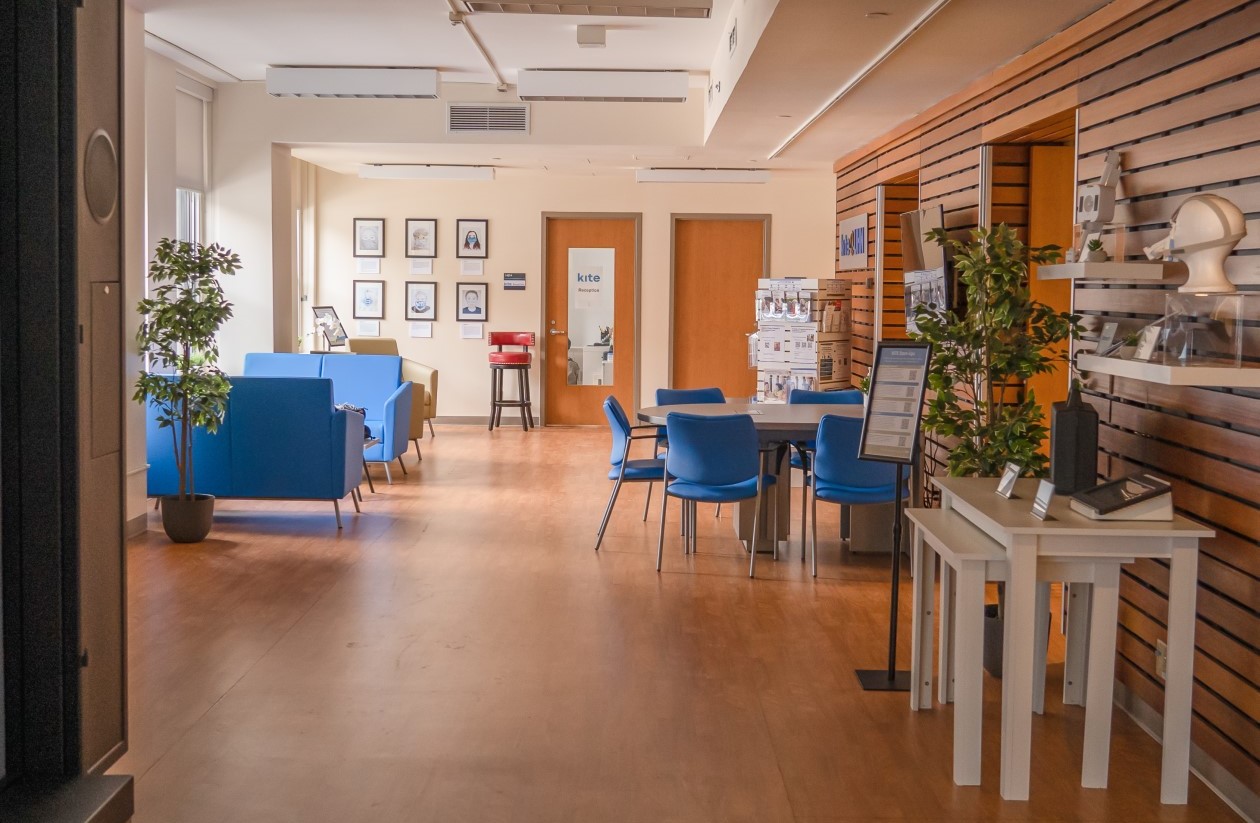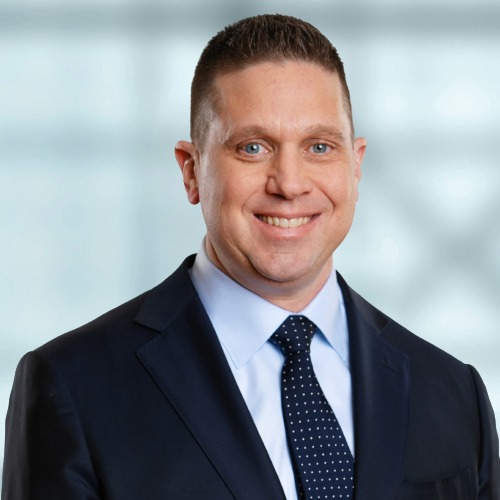The Innovation Gallery: A Display of Integrated Care
An interview with Mary Lam about the Innovation Gallery, COVID-19 and KITE's mission

It's been more than two years since the World Health Organization declared COVID-19 to be a pandemic. The announcement and subsequent impact of the unprecedented health emergency upended the lives of billions around the world. It changed the way we work, learn, do business and engage with family and friends.
At KITE, scientists, staff and research trainees pivoted to remote work in order to continue conducting important research into aging, injury and rehabilitation.
The reduced foot traffic at KITE's downtown Toronto location ended up providing an unexpected opportunity for the leadership team at KITE. Led by Mary Lam, Associate, KITE Directorate, the team quickly mobilized efforts to overhaul KITE's one-of-a-kind Innovation Gallery. Located in the lobby of Toronto Rehabilitation Institute, the gallery features a new look and feel that showcases both products and people. It includes a high-definition video wall and patient education portal.
The Storyworks team sat down with Lam to learn more about the Innovation Gallery, its purpose at KITE and the potential impact on its intended audience.
What do technology and innovation mean to you?
Innovation to me means making changes in something established, especially by introducing new methods, ideas or products. When we talk about technology, I think of science or knowledge that's put into practical use to solve problems or invent useful tools.
What excites you most about KITE and being on the KITE team?
I started working at KITE in 2018. We were smaller and fewer in size than we are now. Regarding your question, I would say that I am excited to collaborate with so many wonderful individuals. I first came on board at the same time as our new institute director, Milos Popovic, and seeing all the great things that have been accomplished in the last four years has been really exciting.
What is the importance of KITE's work?
I think this question speaks to KITE's mission and goals. Our research is dedicated to improving the lives of people living with the effects of disability, illness and aging. We do this by focusing our work on injury prevention, restoration of function and enhancing participation and independent living. So, our research is key to informing rehabilitation services, especially with the aging population today.

What makes KITE different from other research labs or places you have worked before?
Yes, that's a great question. KITE is my first experience working in a research facility. I come from a clinical background and worked in a smaller setting. What makes KITE different from other places I have worked at is the number of people that I get to interact with, not necessarily just through projects but also within my daily work. It's wonderful to work with and be part of a larger team and organization, and that wasn't the case before I came to KITE.
How does your project at the Innovation Gallery fit into the mission of KITE? And what is its purpose?
The Innovation Gallery aligns with KITE's overall mission and UHN's strategic priorities. One of these priorities is to integrate clinical care, research and education. The gallery is a unique space and platform where these areas can come together and collaborate. Visitors are welcome to learn more about the amazing scientific discoveries happening here, as well as the successful business partnerships, including international partnerships with startups and commercialization efforts. We also have educational resources available for patients and their families.
So far, how has KITE helped to further advance your work?
I'm not a scientist and don't conduct research. But I have always been interested in the role research plays in improving the lives of individuals like you and me. With a clinical background, I have always helped people to improve their lives health-wise. Research does this in an indirect way. Working at KITE has given me the opportunity to understand how a research institute operates, and I have truly gained a greater appreciation for all the hard work that needs to be done behind the scenes in order for research to move forward.
What has been the users' reaction to the Innovation Gallery so far?
The renovations for the Innovation Gallery were completed during the pandemic, so due to public health restrictions we haven't been able to open for very long. There hasn't been a lot of traffic in the space yet. Once the COVID situation improves, our hope is to start planning more activities and events for the space. That way, we'll gain more foot traffic and feedback, too.

How will you, and the medical community, know that your work is a success? What are the measures of success?
Regarding the Innovation Gallery ... it's a space where clinical care, research and education can meet. So, a few measures of success would be to have these separate areas converge together, to have each area highlight each other's successes, and possibly to increase collaborations between them. When solving a problem, it's always better to work together instead of alone. If there's an increase in collaboration between these three areas and more activity in the space overall, that's a pretty good measure too.
Who is the Innovation Gallery's audience? Is it open to the general public?
Yes, the gallery is open to the public. Once restrictions are lifted, everyone is invited to visit. It's on the first floor. We've moved KITE's reception down to the gallery, too. Everyone is welcome to come in, including visitors, patients and families.
How have the past 2 years (COVID) impacted and changed your work at KITE?
The most obvious way COVID changed everybody's work, including mine, has been the remote work aspect. At KITE, we've been quite productive while working from home ... but I think there's a certain disconnect when you don't have regular opportunities to meet with your colleagues in person. There's something lost there. In some cases, work can be much more efficient when done in person instead of remotely.

What would you want readers to know about KITE?
I want them to know that KITE is on a mission to push the boundaries of rehabilitation research and to use this work to make a meaningful impact in people's lives.
What's next for you at KITE? Looking to the future, what will be your next focus?
Like I mentioned earlier, I'm still a relatively new arrival to research and KITE, so I'm just going to keep focusing on how I can help to continue and improve the important work being done here. Whether it's in supporting our Director Milos Popovic in the Directorate, or continuing my work in operations managing space and the Innovation Gallery, I'll keep moving forward from there.
Lastly, what inspires you?
During challenging times, and especially in the last two years, what I've found to be inspiring is seeing individuals who, despite overwhelming challenges and uncertainty, continue to push on and do what needs to be done. It's very easy to get down and wallow. But everybody is going through the same thing right now, and when you see individuals take on a leadership role and motivate or inspire others to keep going despite everything that's happening ... I find that really inspiring.
KITE continues partnership with Centennial College
KITEworks Magazine is an annual collaborative project between Centennial College's Professional Writing-Communications and Photography programs and KITE. The stories, experiences and photographs shared in this year's edition of the magazine give an unfiltered look into how KITE has evolved to become a world leader in rehabilitation science. Come and explore how KITE works!




